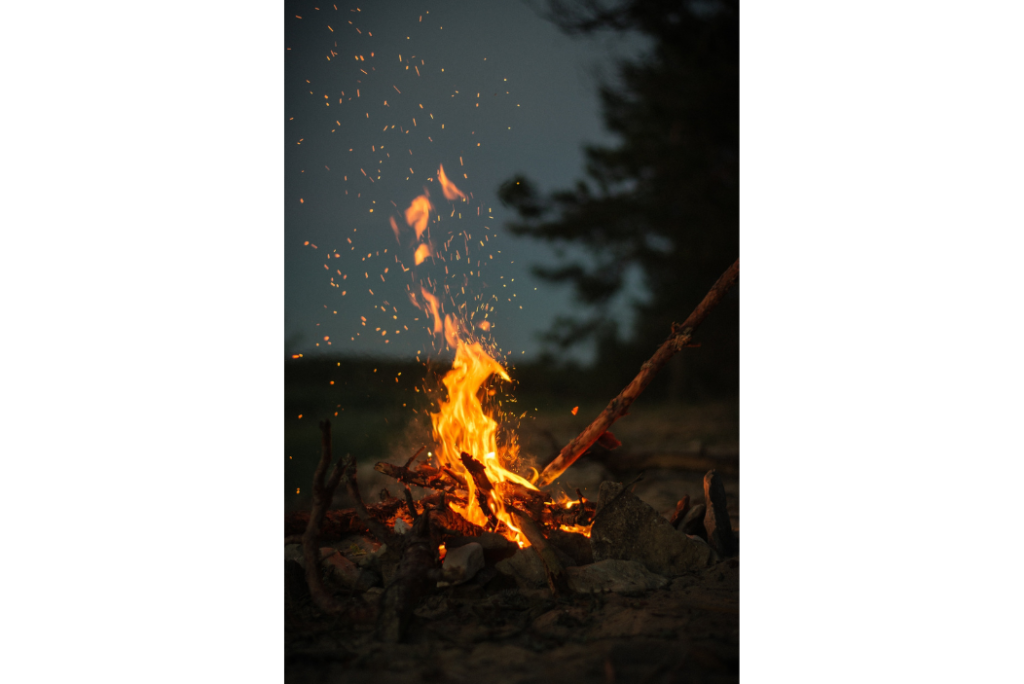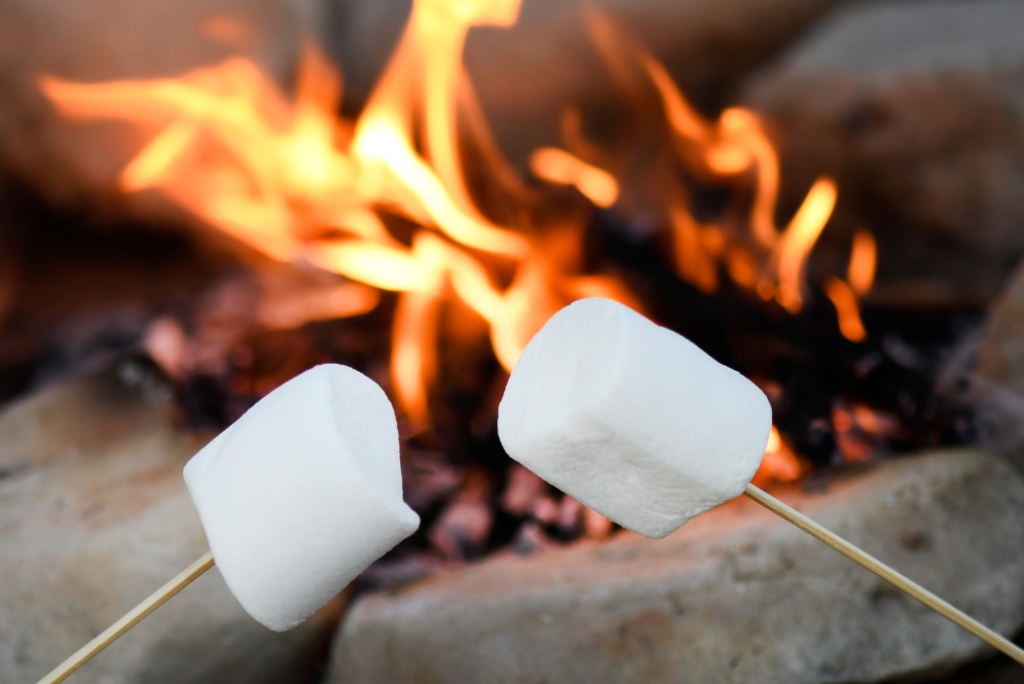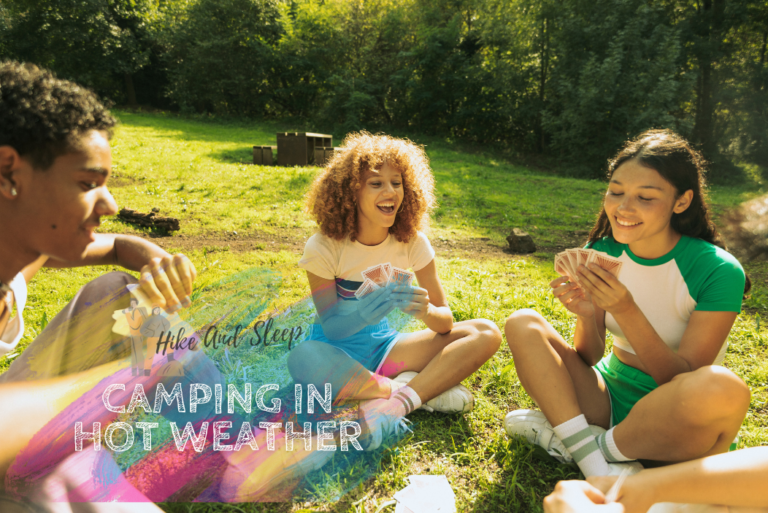How Hot is a Campfire? Understanding the Intense Heat of Campfires
Campfires are an essential part of the camping and hiking experience. Gathering around a warm fire, roasting marshmallows, and sharing stories is a cherished tradition for many outdoor enthusiasts.
But have you ever wondered just how hot a campfire gets? Understanding the temperature of a campfire can not only make your experience more enjoyable but also keep you safe.
In this blog, we’ll explore the factors that affect the temperature of a campfire, how to measure it, and offer tips for maintaining a safe and comfortable fire. Let’s dive in!
So, next time you gather around a campfire, take a moment to appreciate the heat and consider these tips for managing it.
Table of Contents
- 1 Factors Affecting Campfire Temperature
- 2 Measuring Campfire Temperature
- 3 How Hot Can a Campfire Get?
- 4 Tips for a Safe and Enjoyable Campfire
- 5 Fun Facts about Campfire Heat
- 6 Conclusion
- 7 FAQs
- 7.1 Q: Can campfires reach temperatures higher than the average range?
- 7.2 Q: How long does it take for a campfire to cool down completely?
- 7.3 Q: Is it safe to roast marshmallows directly over a campfire?
- 7.4 Q: Can a campfire cause wildfires?
- 7.5 Q: What’s the best way to start a campfire?
- 7.6 Q: Can campfire heat be used to generate electricity?
Factors Affecting Campfire Temperature
Type of Wood
The type of wood used in a campfire has a major impact on its temperature. Hardwoods such as oak and maple will burn hotter than softwoods like pine. This is because hardwoods contain more energy, which is released as heat when they are burned. Additionally, hardwoods have less sap which can reduce the amount of smoke produced by the fire.
Oxygen Supply
The amount of oxygen that is supplied to a campfire also affects its temperature. A well-ventilated fire will burn hotter than one that is starved of oxygen, as there will be more air available to feed the flames and produce heat. To ensure your fire has enough oxygen, it is important to build it in an open area and keep it away from any obstructions that could limit airflow.

Weather Conditions
Weather conditions can also have an effect on the temperature of a campfire. Windy conditions can cause the fire to burn hotter due to increased oxygen supply, while rainy weather can reduce the intensity of the flames and lower its temperature output. Additionally, cold temperatures can make it harder for a campfire to get started or stay lit for long periods of time.
Fuel Source
The fuel source used in a campfire also affects its temperature output. For example, charcoal burns at higher temperatures than wood due to its higher energy content and lower moisture content, making it ideal for cooking over high heat. On the other hand, green wood or wet wood may not burn hot enough for some applications such as cooking over an open flame or boiling water for drinking purposes.
5 Fuel Placement
The placement of fuel within the campfire also plays a role in determining its temperature output. Logs should be placed in an alternating pattern with plenty of space between them to allow air to flow freely around them and feed the flames with oxygen. Additionally, kindling should be placed underneath larger logs so that they catch fire quickly and produce more heat faster

Measuring Campfire Temperature
There are several methods for measuring the temperature of a campfire. One option is to use a thermometer specifically designed for high-heat environments. These can be found at camping supply stores and are a more accurate way to measure the temperature.
Another method is to estimate based on the color and size of the flames, with blue or white flames indicating a higher temperature than orange or yellow flames. Whichever method you choose, it’s important to take precautions and use protective gear when measuring a campfire’s temperature.
Read Also:
- Can You Use A Camping Stove Indoors
- Basic Requirements For Camping
- Camping Fears
- Solo Camping For Women
- Are Yeti Coolers Worth It
How Hot Can a Campfire Get?
Campfires can reach temperatures of 600-900 degrees Fahrenheit, depending on the type of wood used and other factors. To put that into perspective, water boils at 212 degrees Fahrenheit.
This high heat is necessary for cooking food and providing warmth, but it also poses potential dangers if not managed properly.
Tips for a Safe and Enjoyable Campfire
To keep your campfire at a safe and comfortable temperature, it’s important to monitor it regularly. Adding or removing wood as needed can help regulate the heat output. Supervising children and pets around the fire is also crucial for their safety. Additionally, always make sure to properly extinguish the fire before leaving the campsite or going to bed.
appreciate the heat and consider these tips for managing it. We hope this blog has been informative and helps you have even more enjoyable campfire experiences in the future.

Fun Facts about Campfire Heat
In your next camping trip, you can unravel some fascinating facts about campfire heat that will impress your friends and family. Here are some:
- Did you know that the color of the flames in a campfire can indicate its temperature? Blue flames are hotter than orange or yellow flames.
- Campfires can heat rocks surrounding them, allowing ancient civilizations to cook food and create tools.
- Some animals, like the kangaroo rat, can survive in scorching environments and even near wildfires due to their unique adaptations.
- In controlled burns, used for land management purposes, temperatures can reach up to 2200 degrees Fahrenheit (1200 degrees Celsius).
- The discovery of fire and its controlled use was a significant milestone in human history, revolutionizing cooking, warmth, and protection.
Conclusion
Understanding the temperature of a campfire can enhance your camping and hiking experiences, making them more enjoyable and safe.
From learning about the factors that affect its heat output to measuring and maintaining a comfortable temperature, these tips will help you make the most out of your next campfire experience.
So grab your marshmallows and gather around the fire, knowing that you now have a better understanding of just how hot a campfire can get.
FAQs
Q: Can campfires reach temperatures higher than the average range?
A: Yes, larger campfires fueled by hardwood logs can exceed 2000 degrees Fahrenheit (1093 degrees Celsius).
Q: How long does it take for a campfire to cool down completely?
A: Depending on the size and materials used, it can take several hours for a campfire to cool down completely.
Q: Is it safe to roast marshmallows directly over a campfire?
A: It’s safe as long as you use a roasting stick and are cautious about not getting too close to the flames.
Q: Can a campfire cause wildfires?
A: Yes, an uncontrolled campfire or embers can ignite nearby vegetation, leading to wildfires.
Q: What’s the best way to start a campfire?
A: Use dry kindling and small branches to create a small fire, gradually adding larger logs as it grows.
Q: Can campfire heat be used to generate electricity?
A: Yes, some innovative technologies explore the potential of harnessing campfire heat for electricity generation.







